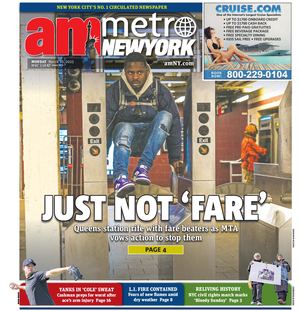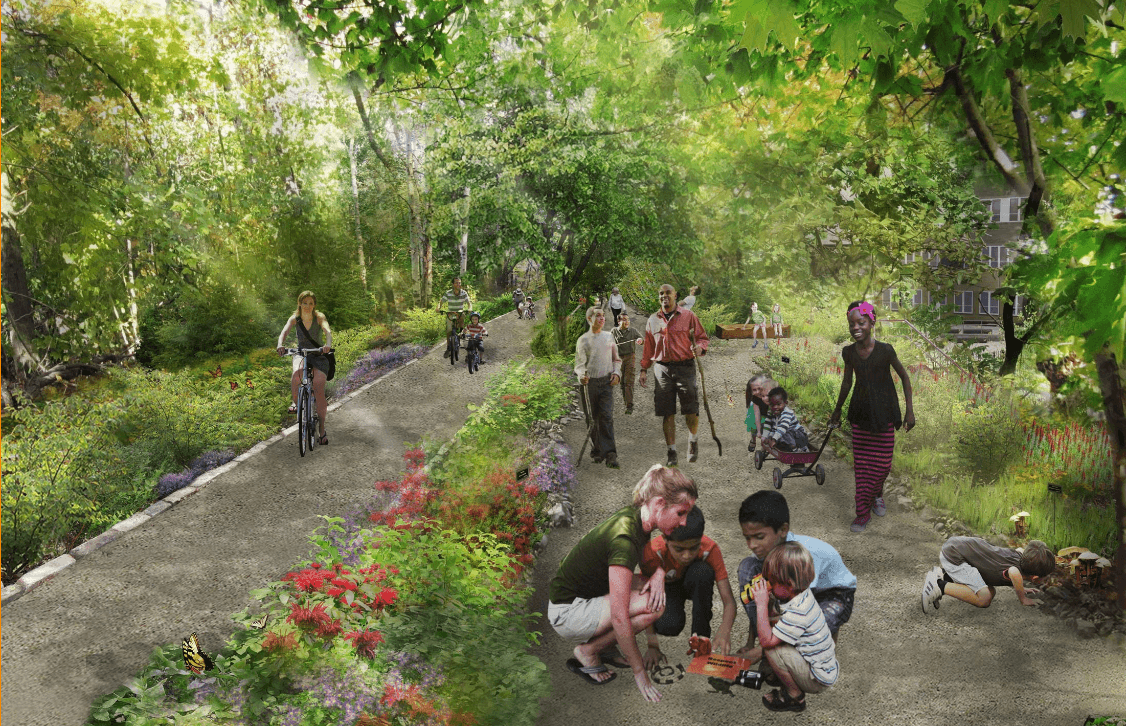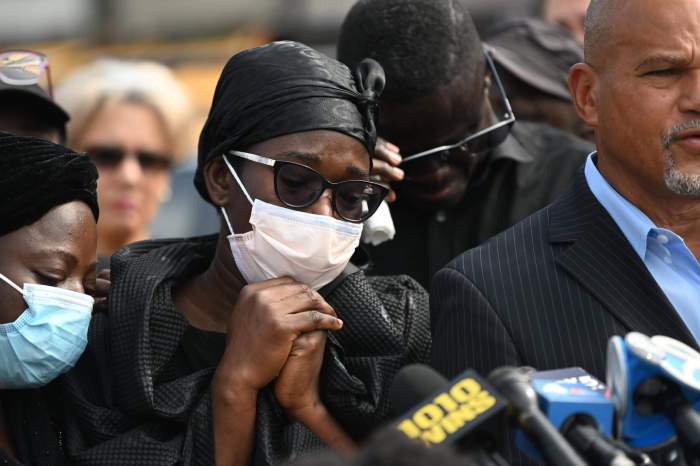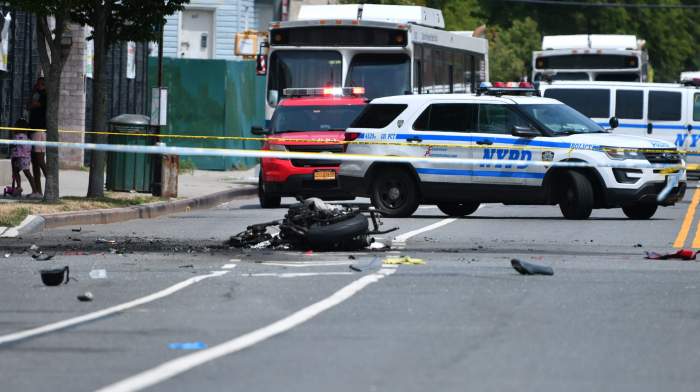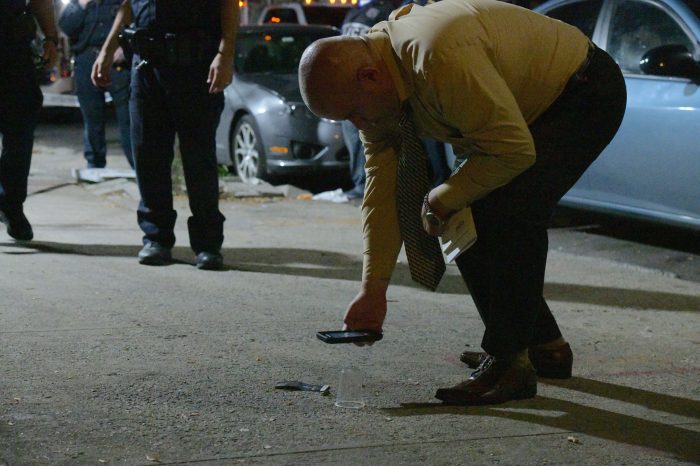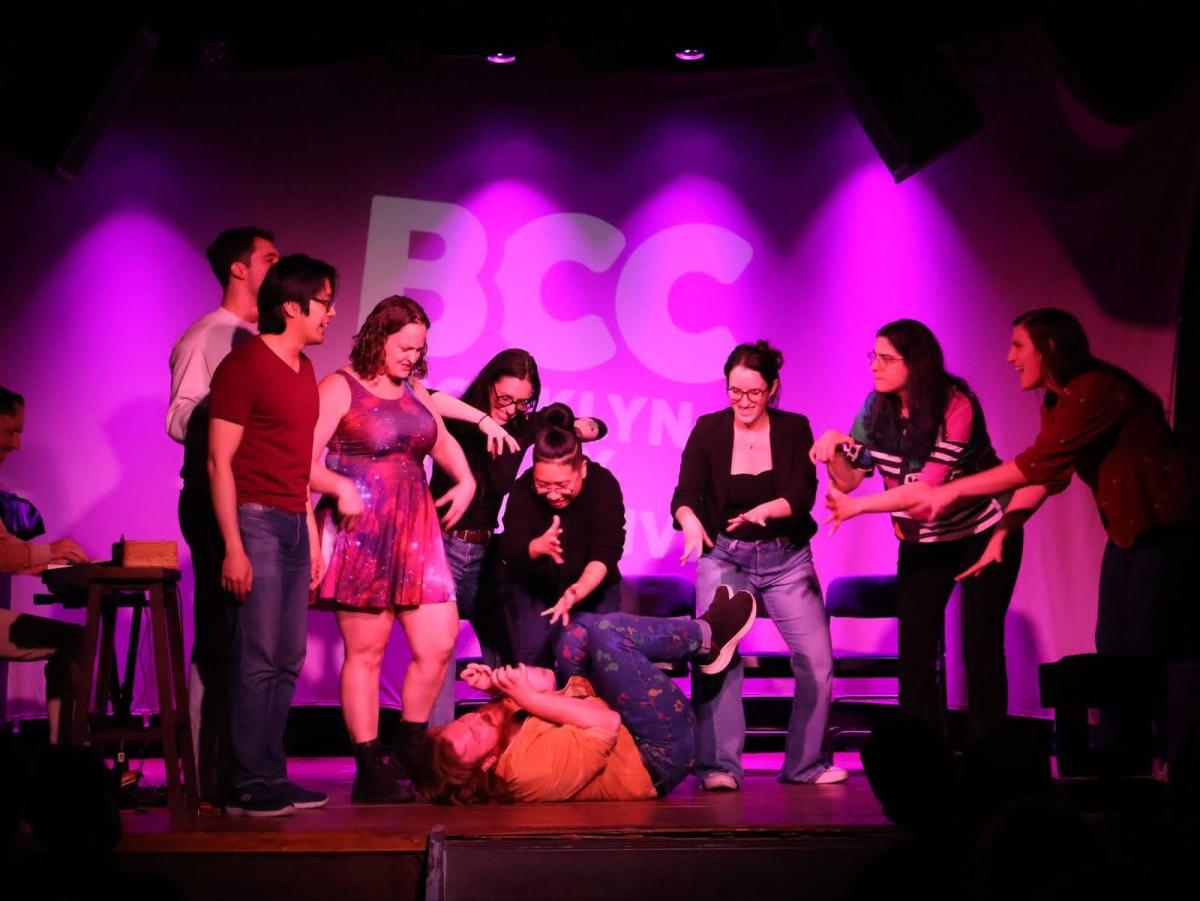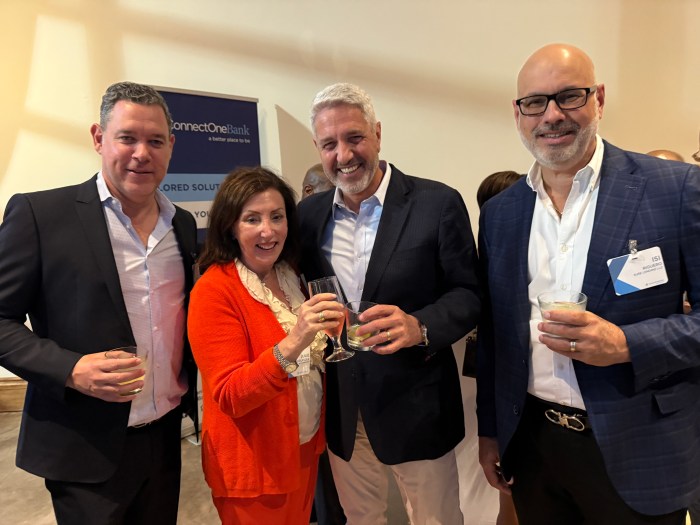Residents of the Rockaway peninsula are incensed at the Adams administration’s decision to fund a linear park along a long-disused rail spur in Queens, and say the right-of-way should be used as a new subway connection for some of the city’s most aggrieved straphangers.
Supporters of the QueensLink proposal gathered on the Rockaway Beach boardwalk Sunday, Oct. 9, to voice their support for what they say would be a game-changing project for the peninsula’s residents but is in danger of being consigned to the dustbin of history. The project would extend the M train south from Rego Park along the abandoned Rockaway Beach Branch rail line, eventually connecting with the A-train to provide an additional line of subway service to the peninsula.
“This is a project that checks all the boxes,” said Andrew Lynch, the Chief Design Officer for QueensLink, at the rally. “It’s only 3.5 miles but it would do so much for so many people.”
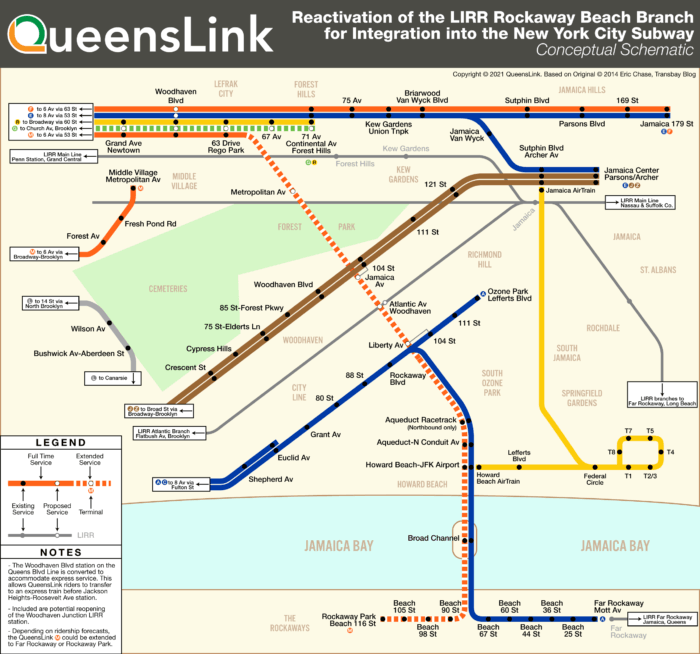
In August, a group of 15 local pols — including Queens Borough President Donovan Richards, U.S. Rep. Gregory Meeks, three state Senators, six assemblymembers, and two Council members — signed a letter to Mayor Eric Adams and Gov. Kathy Hochul requesting an environmental impact study for the QueensLink, deeming the project as crucial for central and southern Queens as the governor’s proposed Interborough Express would be for Brooklyn and western Queens.
But the pols and advocates were left disappointed last month when the mayor announced $35 million in funding for the QueensWay, a rival project that would convert the disused rail corridor into a linear park running from Rego Park down to Ozone Park.
“We all celebrate the use of Central Park,” Hizzoner said at the announcement last month. “Well, this park is going to be the center of the lives of this area, this community, so they can enjoy the open space that we have here.”
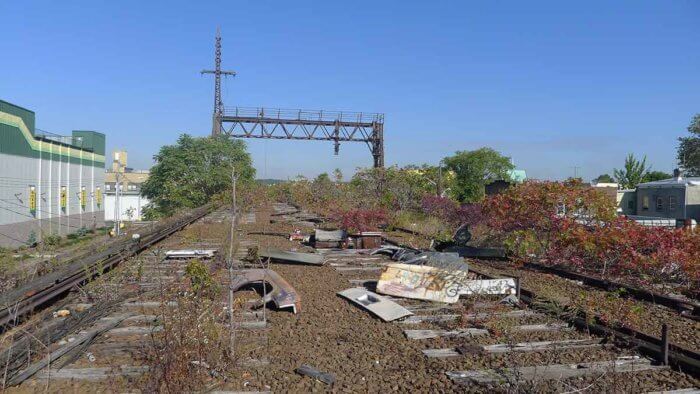
QueensWay supporters were thrilled by the announcement, which concerns the first phase of the project at the Metropolitan Hub near Forest Park. Karen Imas, a member of Friend of the QueensWay’s steering committee, says the project will bring much-needed greenspace to central Queens.
“This is a once-in-a-generation project for Queens,” Imas said in an interview. “This is a modern greenway where there has been very little park investment.”
Imas touted benefits for the environment, small businesses, and pedestrians and cyclists as selling points for the greenway, and noted the support of groups like Transportation Alternatives and the New York League of Conservation Voters. More to the point, she says that the project is shovel-ready on a far more immediate timeline than would be the QueensLink.
“We want to bring these benefits to central Queens in the near term and create an urban game-changing project for the borough and the community,” Imas continued.
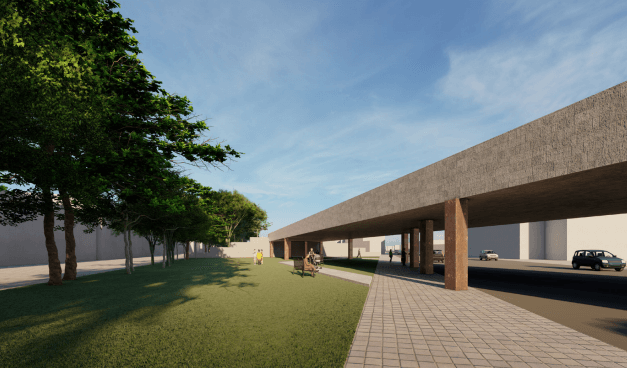
But QueensLink supporters disagree, particularly those from Rockaway, whose residents enjoy the longest average commute times of anyone across the five boroughs, State Comptroller Tom DiNapoli found in a report released last month.
Both QueensWay and QueensLink partisans claim to be the true champions of equity for residents of the World’s Borough, and both argue that theirs is the community’s true desire. But QueensLinkers say their position is, inherently, a compromise, as their proposal also accommodates parkland.
“We’re not against parks and we’re not against puppies. But we are against those who would stand in the way of equity,” Lynch said. “There are a lot of people, a lot of politicians who talk about equity, but this is the perfect kind of project where you could put your money where your mouth is.”
City Councilwoman Selvena Brooks-Powers, who reps the peninsula’s eastern end and chairs the Council’s Transportation Committee, deemed Rockaway a “transit desert” where residents are often stranded waiting for trains, which ultimately ferry them on a long and arduous commute.
“This is not merely a train conversation,” Brooks-Powers said. “It’s a transportation conversation. It’s an equity conversation.”
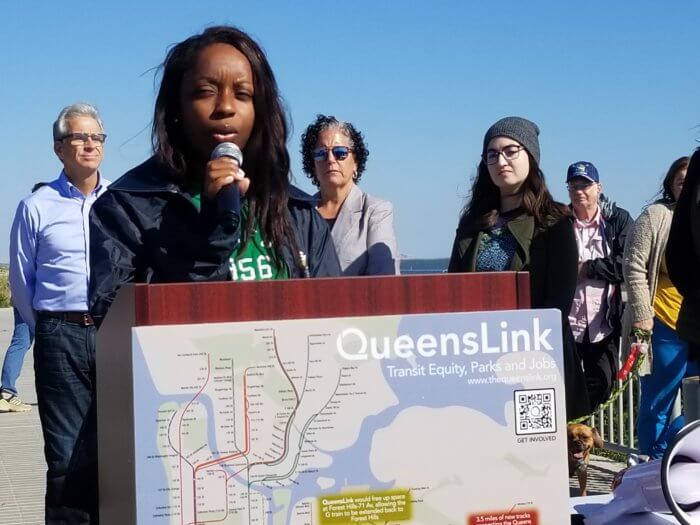
Assemblymember Stacey Pheffer Amato, who reps most of the peninsula in Albany, went so far as to declare Mayor Adams was “misinformed” about what the community is in favor of and said she is lobbying the administration to change course.
“I think unfortunately that our mayor was misinformed,” Pheffer Amato said. “I don’t think he was given the information about what the people want. And I know I am gonna make sure he hears that message from me personally, and I called immediately to the mayor’s office to let them know how I felt about that groundbreaking and what I’m supporting.”
A spokesperson for the mayor disputed the notion that the mayor was misinformed and touted the support of a number of local electeds, including City Councilwoman Lynn Schulman, State Sen. Leroy Comrie, and Assemblymembers David Weprin and Jenifer Rajkumar.
The Metropolitan Transportation Authority included the QueensLink on its most recent 20-year capital needs assessment, after previously reporting in 2019 that a subway extension along the spur could cost up to $8.1 billion. QueensLink later countered with its own study finding the proposal would cost up to $3.7 billion. The MTA is in the throes of conducting an environmental review for the transit project, said the mayoral spokesperson, Charles Lutvak.
Imas says that the high cost, engineering challenges, and unclear timeline should settle the argument in favor of the QueensWay.
“I think there’s also a reality around this project…in terms of the benefits this project could bring today, shovel ready,” Imas said. “And I think after 60 years, that has to be looked at with a very real analysis.”
